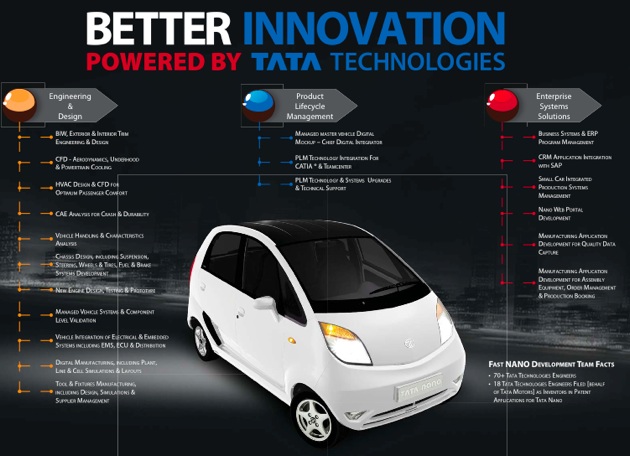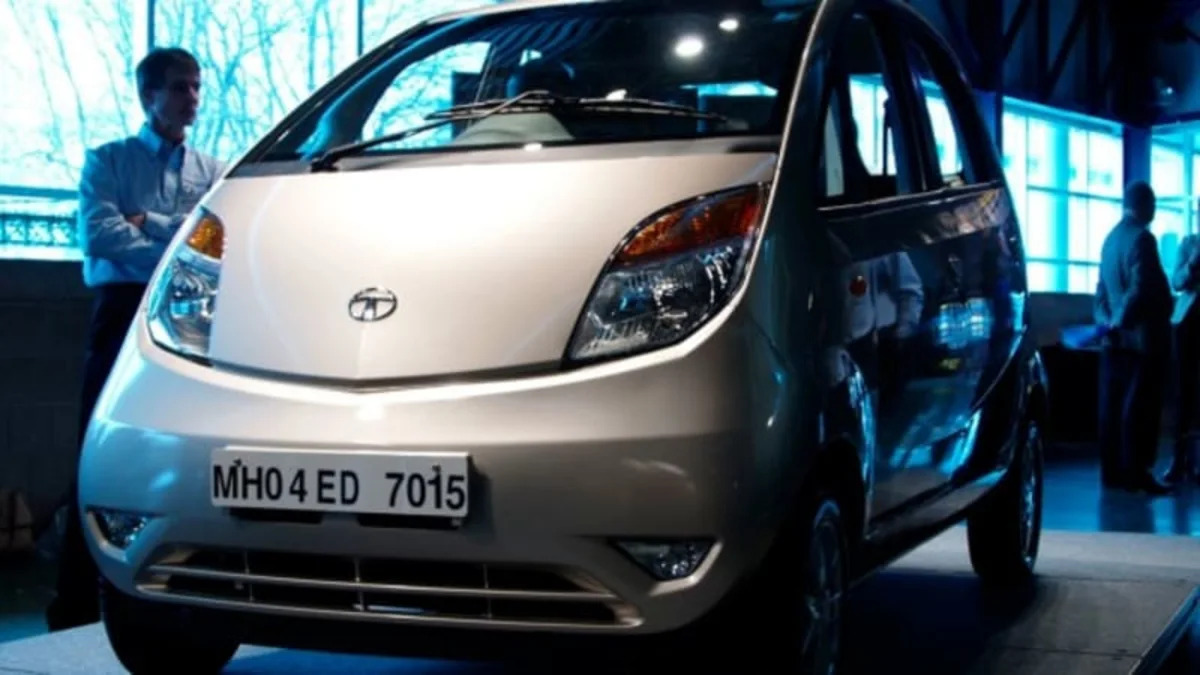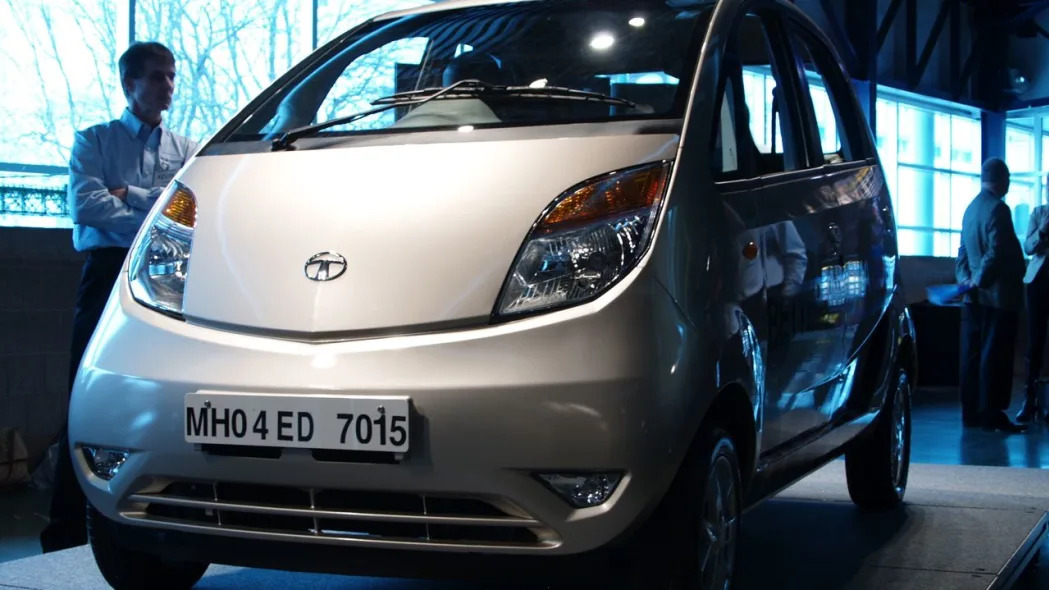Tata Nano – Click above for high-res image gallery
The Tata Nano has power windows for the driver and front passenger. Anyone sitting in the rear seats, though, will have to make do with manual controls. Of all the things we learned about the world's cheapest car during its official North American unveiling in downtown Detroit yesterday, the way Tata Motors' engineers split the difference between feature and basic functionality with its windows best exemplifies how this car got to be so inexpensive.
In person, the Nano doesn't exude cheapness. It doesn't look or feel expensive, to be sure, but there is a bit of heft to the doors and the Nano gives off a vibe that this it is, in fact, a real car – if a truly small and simple one. While the Nano on display at the Detroit Science Center was static, Tata did let us sit inside, and as it turns out, the interior is surprisingly roomy – bubble roofs do a lot to reduce claustrophobia. The Nano isn't a car we'd want to go cross-country in, but to move four people around a city, it could work quite well. Especially at the absurd price – maybe – of around $5,000 once it can be manufactured to U.S. standards and tastes. Find out more after the jump.
Photos by Sebastian Blanco / Copyright ©2010 Weblogs, Inc.
While seeing the car in person on U.S. soil for the first time was good, the company sponsoring the event – Tata Technologies – couldn't really help us with detailed information on when and how the Nano might come to the States. See, the Tata Group is made up of 99 companies that operate all over the world, including 12 companies and 16,000 employees based in the America. Tata Motors designed and builds the car, while Tata Technologies just provides help to Tata Motors. Therefore, the Tata Technologies representatives on hand couldn't speculate on what their client has in store for the car in the future.

A short history of the Nano
The Nano was unveiled at the New Delhi Auto Show in 2008, almost exactly two years ago, and the first delivery took place in India in the middle of 2009. It's been confirmed for Europe and talked about for other markets, but this is an Indian car, first and foremost.
Ratan Tata, the chairman of the Tata Group, came up with the idea for the Nano because he kept seeing entire families – upwards of 6 or 7 people – riding together on little scooters. Packing them into a car, he thought, would be safer and better for the environment. The challenge, undertaken in 2003, was to develop a real car that the average Indian could afford, and he wanted to keep the cost down to one lakh (which is 100,000 rupees, about $2,188 U.S. at today's exchange rates). This difficult task has proven popular. Patrick McGoldrick, the managing director at Tata Technologies, said that Tata Technologies wanted to have the Nano's U.S. unveiling at the Detroit Science Center and hopes to one day display the car there because that would inspire the children who visit the center to "do the impossible."
Is having a cheap car available in India a good thing for the environment? Sure, Tata is quick to point out that the car gets well over 50 miles per gallon, but is the practice of making cars easy to afford an environmental benefit overall? David Good, who heads the Tata corporate office in the United States, says yes. He told AutoblogGreen that:
If all the cars in India were Nanos, India would be a lot better off. India is not a country that has too many cars. It has too many cars for the state of the roads. If you look at the cars-to-people ratio, it's very, very low. I think India needs to improve its infrastructure, then it would be able to handle all the cars. If all the cars were as fuel efficient as the Nano is, India would have a lot better future.
So, what about the Nano in the U.S.?
This week in Detroit, there was a lot of nothing specific to be said about the Nano coming to the U.S. market in the future. No detailed price estimates, no talk of potential powertrains – really nothing, even though we're heard about a hybrid Nano (and rumors of an all-electric and air-powered versions) for some time. A U.S. Nano would need a top speed of somewhere between 80 and 90 miles an hour – the India-spec version only goes 62 mph – Warren Harris, president and COO of Tata Technologies, told AutoblogGreen, and that would require an upgraded engine to match. He also said that if the Nano does come to America, it "would obviously be more" than $2,500 and that the company would try to make the same kind of pricing splash here as it did in India, where the Nano is about half as much as the next-cheapest competitor. Does that mean we're looking at a $5,000 Nano for America? Maybe, but no one would say anything specific.
A U.S. Nano would also need to be nicer inside to be attractive to buyers, Tata representatives told us. They drove the car around Judson College in Alabama recently and quickly learned that they need to bump up the comfort level in the car. Students all asked where the iPod connector was and why there weren't any cupholders. Those sorts of features would be a part of the program if the actually gets the official green light. Thankfully, Tata Motors designers have time to iron out these details, because any potential U.S. launch is likely to be years away.




Sign in to post
Please sign in to leave a comment.
Continue